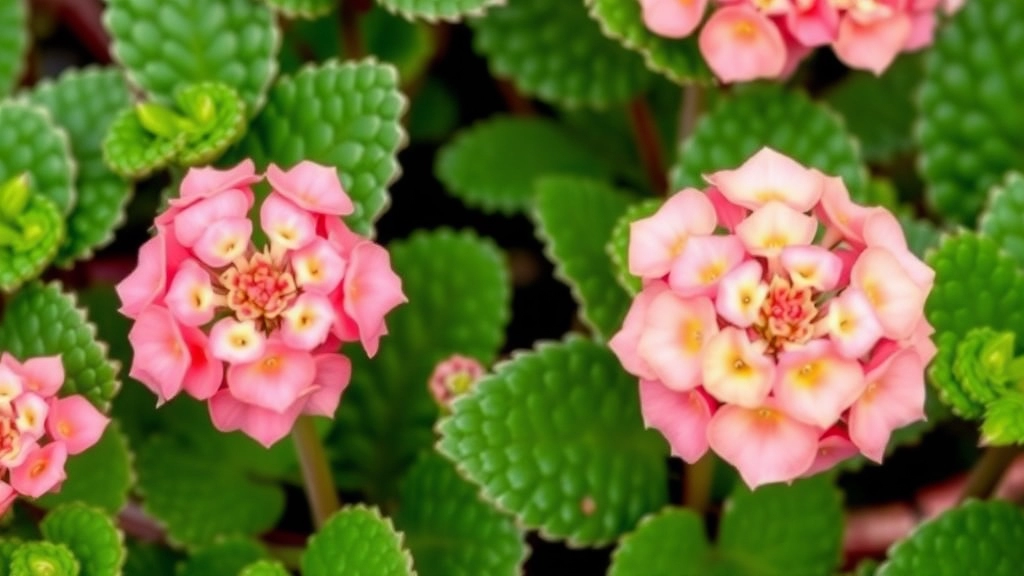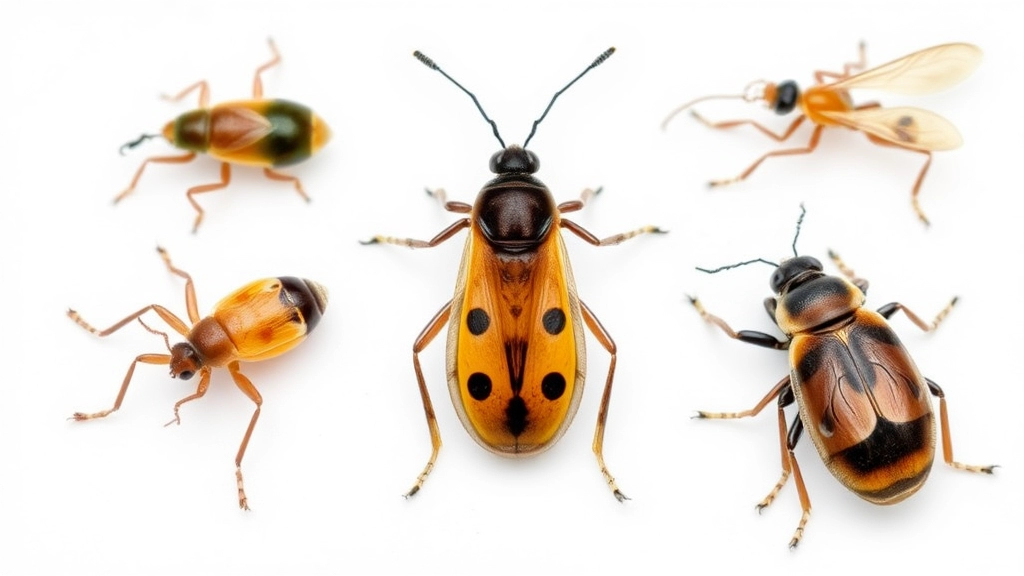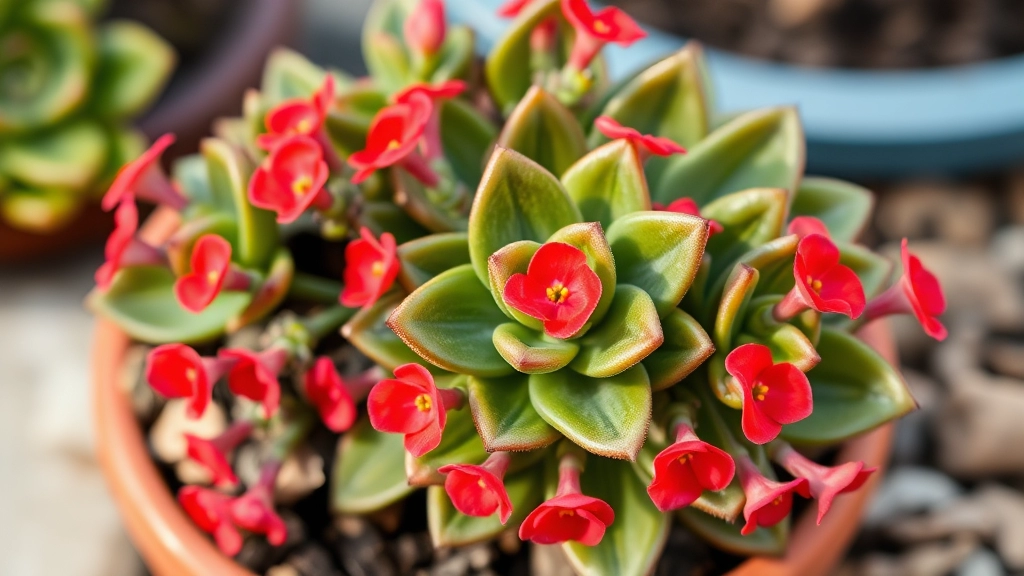Kalanchoe Succulent Care
Ever wondered how to make your Kalanchoe succulent with red flowers thrive? You’re in the right place. As a plant lover, I’ve found that these vibrant beauties need just the right care to flourish. From sunlight to watering tips, let’s dive into how you can keep your Kalanchoe looking its best.
Light Requirements
First things first, ensure your Kalanchoe succulent with red flowers gets plenty of indirect sunlight. Too much direct sun can scorch the leaves, while too little light will stunt its growth.
Watering Tips
Watering is another key factor—let the soil dry out completely between waterings to avoid root rot. Trust me, with these simple steps, your Kalanchoe will be the star of your plant collection.
Identifying Kalanchoe Succulent with Red Flowers
When it comes to houseplants, many of us seek vibrant colours and easy care.
Kalanchoe succulents, particularly those with striking red flowers, are a popular choice for both novice and seasoned plant enthusiasts.
Recognising Kalanchoe
Kalanchoe is a genus of succulent plants that captivates with its fleshy leaves and colourful blooms.
The red-flowered varieties stand out, making them a stunning addition to any home.
Key Features to Identify Kalanchoe Succulents:
- Leaf Structure: Thick, glossy leaves that can be oval or serrated.
- Flower Clusters: Small, tubular flowers that grow in clusters, often with a vibrant red hue.
- Growth Habit: Typically grows upright, reaching heights of around 30-60 cm.
Popular Varieties
Several Kalanchoe species feature red flowers, including:
- Kalanchoe blossfeldiana: Known for its bright red blooms and compact form.
- Kalanchoe thyrsiflora: Also called “Paddle Plant,” it can produce red flowers, although it’s more famous for its unique leaf shape.
Why Choose Kalanchoe?
These succulents are not only beautiful but also relatively easy to care for.
Their striking appearance can brighten any space, making them an ideal choice for both beginners and experienced gardeners.
Ideal Growing Conditions for Kalanchoe

So, you’ve got your beautiful Kalanchoe succulent with those stunning red flowers. Now, let’s chat about how to create the perfect home for it.
Light Requirements
Kalanchoe loves the sun, so think bright, indirect light.
- Best Spot: A south-facing window is ideal.
- Too Much Sun: If the leaves start to look scorched, it’s time to move it back a bit.
Temperature and Humidity
Kalanchoe thrives in warm environments.
- Ideal Temperature: Aim for 20-25°C (68-77°F) during the day and a bit cooler at night.
- Humidity: This succulent doesn’t need high humidity, so a typical home environment works just fine.
Soil Type
Choosing the right soil is crucial for your Kalanchoe’s health.
- Mix: A well-draining potting mix, like cactus soil, is perfect.
- Drainage: Ensure your pot has drainage holes to prevent waterlogging.
Potting
When it comes to potting, don’t skimp on quality.
- Material: Terracotta pots are great as they allow moisture to evaporate.
- Size: A slightly larger pot gives roots room to grow without holding too much water.
Watering and Maintenance Tips for Kalanchoe Succulent with Red Flowers
After ensuring you have the right environment for your Kalanchoe, the next crucial step is mastering the art of watering and maintenance.
Watering Guidelines
Kalanchoe succulents thrive on a careful watering routine. Overwatering can lead to root rot, while underwatering can cause the plant to wilt. Here’s how to strike the right balance:
- Frequency: Water every 2-3 weeks, allowing the soil to dry out completely between waterings.
- Method: Use the soak-and-dry method. Water thoroughly until it drains out of the bottom, then let it dry.
- Signs of Watering Needs:
- Overwatered: Yellowing leaves and mushy stems.
- Underwatered: Wrinkled leaves and drooping.
Maintenance Tips
Maintenance is key to keeping your Kalanchoe healthy and vibrant. Here are some essential tips:
- Soil: Use a well-draining cactus or succulent mix.
- Fertilizing: Feed with a balanced, diluted fertiliser during the growing season (spring and summer) every month.
- Pruning: Remove dead or yellowing leaves to promote new growth and maintain shape.
- Sunlight: Ensure it receives bright, indirect sunlight for optimal growth.
For more detailed information on keeping your Kalanchoe healthy, check out our essential Kalanchoe care tips for summer success and learn how to water a Kalanchoe effectively.
Common Pests and Diseases

As we delve deeper into caring for your Kalanchoe succulent, it’s crucial to be aware of the common pests and diseases that could threaten its health.
What Pests Should You Watch For?
Kalanchoe plants can attract a few unwelcome guests. Here are the main culprits:
- Aphids: Tiny, soft-bodied insects that suck sap from the plant, leading to wilting and yellowing leaves.
- Mealybugs: These pests appear as white, cottony masses on the leaves and stems, also sucking sap and potentially causing leaf drop.
- Spider Mites: Often found on the undersides of leaves, they create fine webs and cause stippling damage.
- Scale: Small, brown bumps that attach to the plant and rob it of nutrients.
Diseases to Keep an Eye On
In addition to pests, Kalanchoe can suffer from a few diseases:
- Root Rot: Typically caused by overwatering, this disease leads to mushy roots and can be fatal if not addressed promptly.
- Powdery Mildew: A fungal infection that appears as a white powder on leaves, often due to high humidity and poor air circulation.
Prevention and Treatment Tips
Here’s how to keep your Kalanchoe healthy:
- Regular Inspections: Check your plant weekly for signs of pests or disease.
- Proper Watering: Ensure the soil dries out between waterings to prevent root rot.
- Good Air Circulation: Avoid overcrowding your plants to reduce humidity.
- Natural Remedies: Use insecticidal soap or neem oil for pest control, and remove affected leaves for fungal issues.
Propagation is an exciting way to create new plants from your existing ones, and Kalanchoe makes this process relatively simple.
One of the most effective methods for propagating Kalanchoe is through cuttings. Here’s how you can do it:
– **Choose a Healthy Plant**: Select a mature Kalanchoe with vibrant leaves and flowers.
– **Make the Cut**: Using a clean, sharp knife or scissors, take a cutting that is about 4 to 6 inches long. Aim for a stem with several leaves.
– **Let It Callous**: Place the cutting in a dry, warm location for a few days. This allows the cut end to callous over, reducing the risk of rot when planted.
– **Plant the Cutting**: Once calloused, place the cutting in a well-draining soil mix.
– **Water Sparingly**: Lightly water the soil, ensuring it’s moist but not soggy.
Kalanchoe often produces offsets, or âpups,â which can be removed and replanted. Here’s how:
– **Locate Offsets**: Look for small plants growing at the base of the parent plant.
– **Remove Carefully**: Gently twist or cut the offset away from the main plant.
– **Plant in Soil**: Place the offset in its own pot with the same well-draining soil mix.
For leaf propagation, follow these steps:
– **Select a Leaf**: Choose a healthy leaf from the parent plant.
– **Cut the Leaf**: Use a clean knife to slice the leaf at the base.
– **Allow to Callous**: Just like with stem cuttings, let the leaf sit for a couple of days to callous.
– **Plant the Leaf**: Lay the leaf flat on the soil surface and lightly cover the base with soil.
After you’ve propagated your Kalanchoe, it’s essential to provide the right care:
– **Light**: Place the new plants in bright, indirect sunlight.
– **Watering**: Water only when the soil is dry to the touch.
– **Patience**: It may take a few weeks for roots to develop, so be patient.
For more detailed information on caring for different Kalanchoe varieties, check out our [comprehensive pink Kalanchoe plant care guide](https://planthq.org/comprehensive-pink-kalanchoe-plant-care-guide/) and learn about the [optimal care guide for Kalanchoe paddle plant](https://planthq.org/optimal-care-guide-for-kalanchoe-paddle-plant/).
Seasonal Care and Blooming Tips for Kalanchoe
So, you’ve got your stunning Kalanchoe succulent with those vibrant red flowers. Now, how do you keep it thriving through the seasons?
Understanding Seasonal Needs
Kalanchoe is a resilient plant, but it does have some seasonal quirks. Here’s what to keep in mind:
- Spring and Summer: This is when your Kalanchoe comes alive.
- Light: Ensure it gets plenty of bright, indirect sunlight.
- Watering: Water more frequently, but let the soil dry out between sessions.
- Fertilising: A balanced fertiliser every few weeks can boost growth.
- Autumn and Winter: As the days shorten, your plant will slow down.
- Light: It still needs light, but consider moving it to a sunnier spot if possible.
- Watering: Cut back on watering; your Kalanchoe will need less moisture.
- Temperature: Keep it in a warm spot, avoiding cold drafts.
Encouraging Blooms
Want those gorgeous flowers to pop? Here are some tips:
- Light Exposure: Kalanchoe needs about 14-16 hours of bright light to bloom.
- Temperature: Keep it between 18-24°C (65-75°F) for optimal blooming.
- Dark Periods: For about 6 weeks before you want it to bloom, give it dark nights (12-14 hours). This helps trigger the flowering process.
Quick Care Checklist
- Spring/Summer: Bright light, regular watering, monthly feeding.
- Autumn/Winter: Reduced light, minimal watering, warm environment.
- Blooming: Ensure long light exposure and dark nights.
Personal Experience
I remember when my Kalanchoe first bloomed; I was over the moon! I had followed these seasonal tips, and it felt like a mini celebration every time those red flowers popped open. If you’re looking for more detailed guidance, check out this comprehensive care guide for pink Kalanchoe plants. Additionally, if you’re curious about the various benefits of Kalanchoe, you might find this article on the health benefits of Kalanchoe Pinnata extract quite enlightening.
FAQs About Kalanchoe Succulent With Red Flowers
What are the light requirements for Kalanchoe succulents?
Kalanchoe succulents thrive in bright, indirect light. A south-facing window is ideal. If the leaves start to look scorched, it’s advisable to move the plant back a bit.
What is the ideal temperature for Kalanchoe plants?
The ideal temperature for Kalanchoe is between 20-25°C (68-77°F) during the day, with slightly cooler temperatures at night. They thrive in warm environments.
Do Kalanchoe succulents need high humidity?
No, Kalanchoe succulents do not require high humidity. A typical home environment with average humidity levels is sufficient.
What type of soil is best for Kalanchoe succulents?
A well-draining potting mix, such as cactus soil, is perfect for Kalanchoe succulents. Ensure your pot has drainage holes to prevent waterlogging.
What kind of pot should I use for my Kalanchoe succulent?
Terracotta pots are recommended as they allow moisture to evaporate. Choose a slightly larger pot to give the roots room to grow without retaining too much water.
What pests should I watch out for on my Kalanchoe plant?
Common pests include aphids, mealybugs, spider mites, and scale. Regular inspections can help you catch these pests early.
What diseases can affect Kalanchoe succulents?
Kalanchoe succulents can suffer from root rot, typically caused by overwatering, and powdery mildew, a fungal infection due to high humidity and poor air circulation.
How can I prevent and treat pests and diseases on my Kalanchoe?
Regularly inspect your plant for signs of pests or disease, ensure proper watering practices, maintain good air circulation, and use natural remedies like insecticidal soap or neem oil for pest control. Remove affected leaves to combat fungal issues.
References
-
The Spruce: Growing Kalanchoe Succulent Plants
-
Gardening Know How: Kalanchoe Plant Pests
-
The Old Farmer’s Almanac: Kalanchoe
